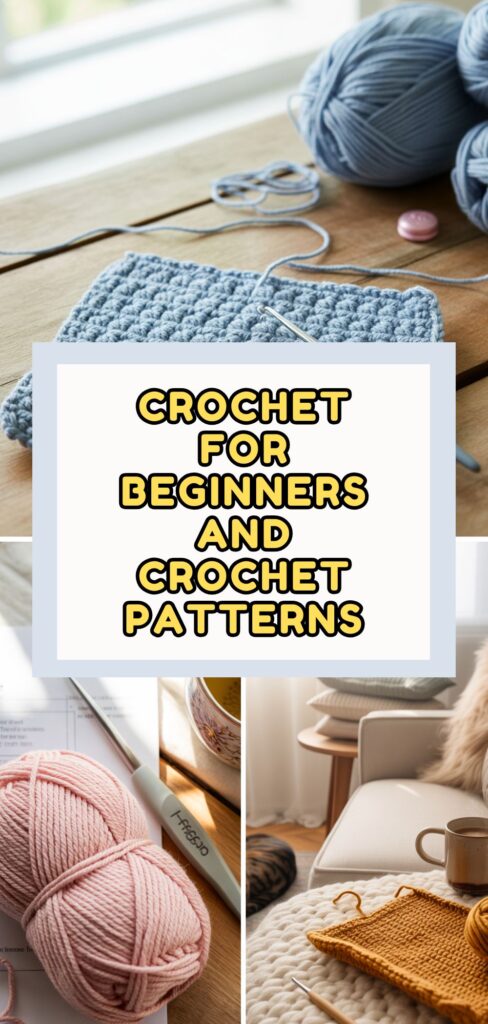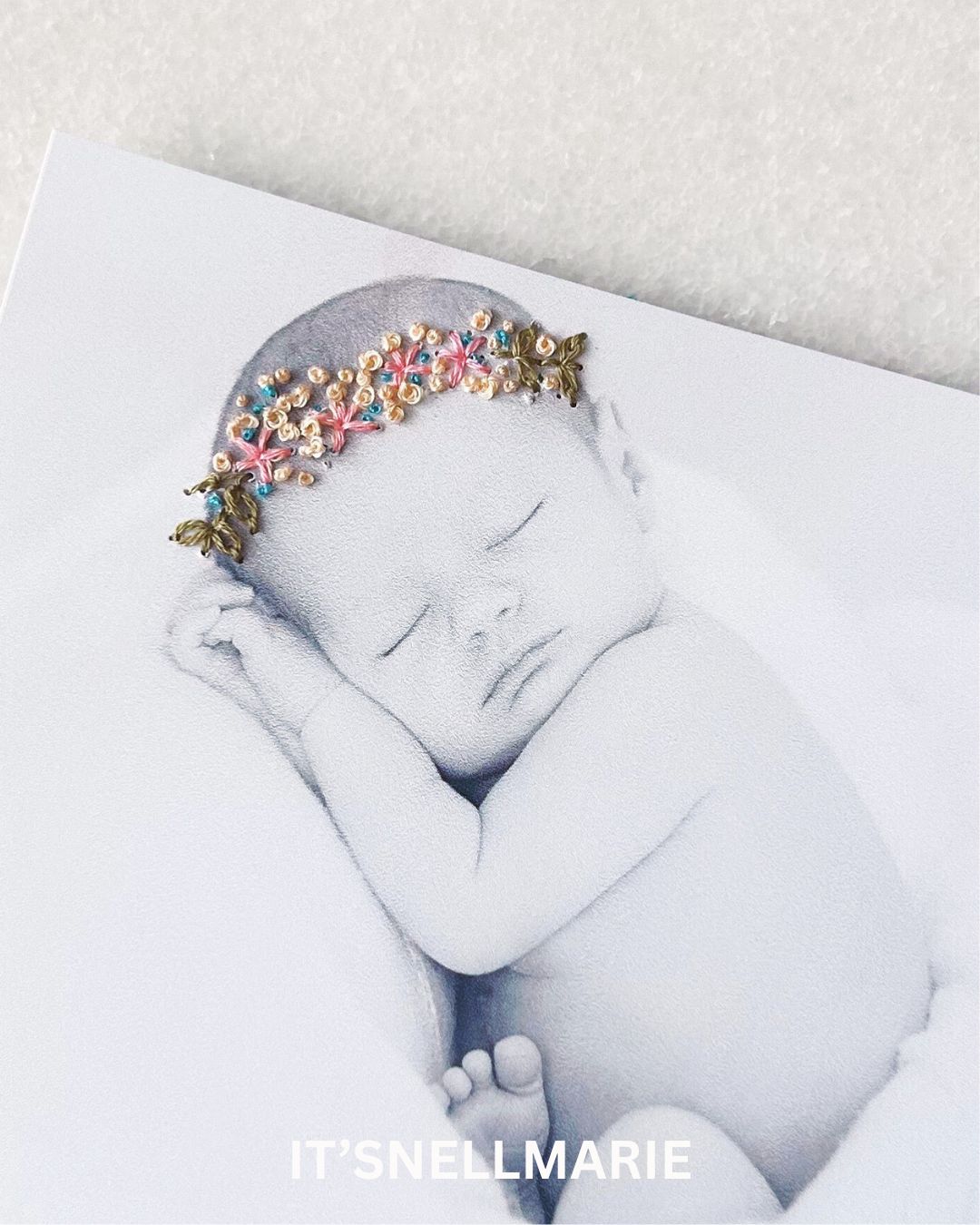The Art of Finding the Perfect Crochet Patterns as a Beginner
Affiliate links may be used in this post and if so I will receive a commission at no extra cost to you. I’m also part of the Amazon Affiliate (Associate) program where I earn a commission from sales made through my affiliate links. Find my full disclosure policy by clicking here.
Last Updated on May 29, 2025 by Nell Marie
Crocheting can feel like stepping into a whole new world of cozy creations—and trust me, it’s such a fun one. If you’ve just picked up your first crochet hook or you’re thinking about giving it a go, you might be wondering: “Where do I even begin?” From deciphering patterns to figuring out what on earth “sc” or “dc” means, the early days can be a little overwhelming.
Save on Pinterest

But here’s the good news: You don’t need to start by crocheting a fancy sweater or a complicated stuffed animal. In fact, one of the smartest things you can do as a beginner is to start with patterns that are simple, straightforward, and confidence-boosting.
Let’s walk through what kinds of patterns are best for beginners, what to avoid (for now!), and some honest, helpful tips to make your crochet journey a smooth one.
More Hobbies:
- Stitching Memories: A Beginner’s Guide to Photo Embroidery
- Art Journal Inspiration (30 Ideas & Inspo Pictures!)
- Watercolor Art for Beginners: Get Started Making Beautiful Art Today
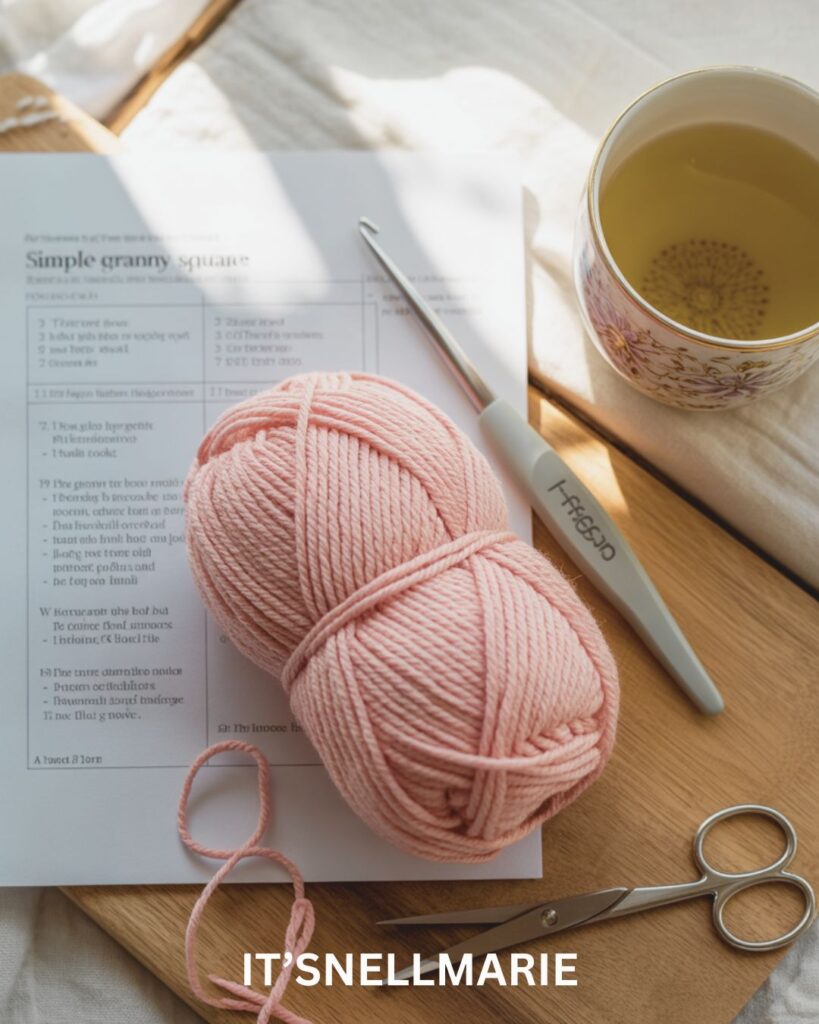
Crochet Patterns
I’ve got to say—I absolutely love to crochet. Once I picked up my hook and got through a few easy patterns (hello, dishcloths and granny squares!), something just clicked.
Before long, I found myself tackling more complicated patterns—things I never thought I’d be able to make when I first started. And the same can totally be true for you.
It all starts with those first few stitches, and with a little practice and patience, you’ll be amazed at what your hands can create.
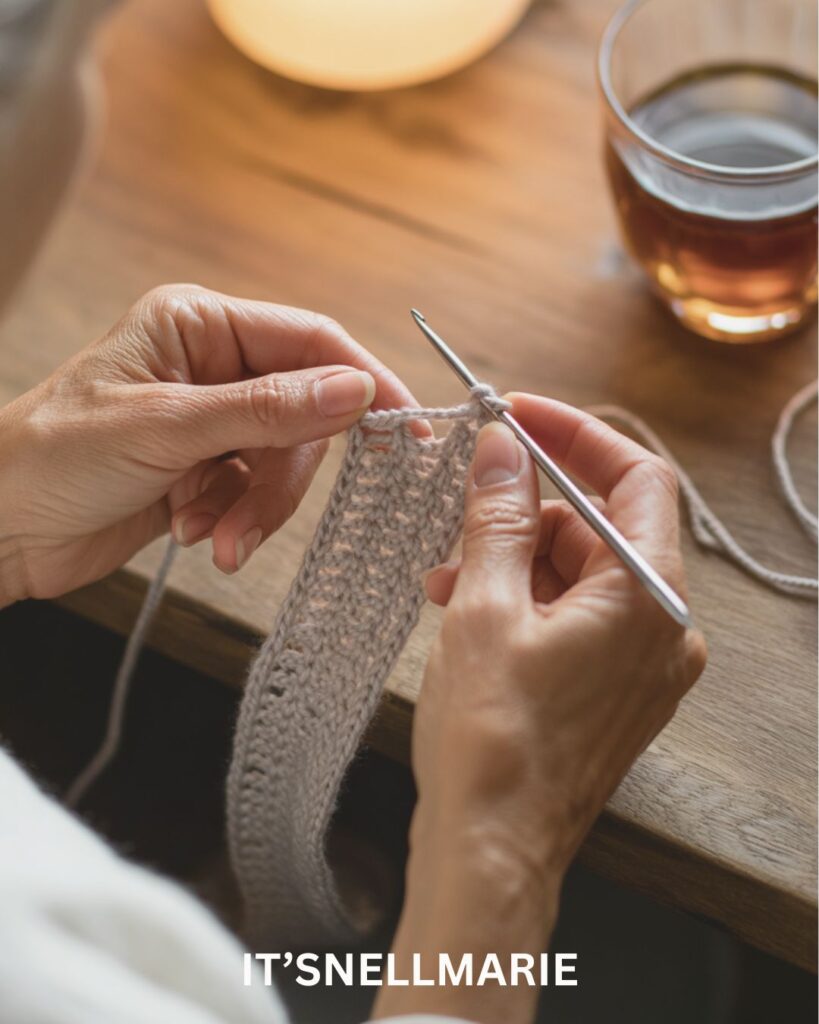
What Makes a Pattern Beginner-Friendly?
Not all crochet patterns are created equal. Some are written for folks who’ve been crocheting for years and are comfortable with advanced techniques.
As a beginner, you want patterns that:
- Use basic stitches
- Have clear, simple instructions
- Are for small, flat projects
- Don’t require fancy shaping or sewing
- Offer step-by-step photos or diagrams if possible
The goal is to build your confidence and muscle memory first—then move on to trickier techniques once you’ve got a solid foundation.
Look for Patterns That Use Basic Stitches Only
When you’re starting out, you’ll want to stick with patterns that use just a few foundational stitches. These are the bread and butter of crocheting and will give you a good feel for the motion and rhythm of the craft.
Beginner patterns often use:
- Chain stitch (ch)
- Single crochet (sc)
- Double crochet (dc)
- Slip stitch (sl st)
Avoid patterns that include:
- Post stitches (fpdc, bpdc)
- Shells, fans, or clusters
- Fancy stitch patterns like cables or bobbles (those are for later!)
A dishcloth or simple scarf that uses only single crochet or double crochet stitches is perfect. It’s repetitive in a good way and lets you practice without worrying about stitch changes or shaping.
Choose Projects That Are Small and Flat
A small flat project allows you to practice without too much commitment or complication. You won’t have to worry about increasing, decreasing, or shaping the item. Some great beginner-friendly projects include:
- Dishcloths
- Washcloths
- Simple scarves
- Coasters
- Granny squares
- Headbands
These projects are quick to finish and offer that satisfying “I made this!” feeling—something every beginner needs.

Look for Patterns That Are One-Piece
Avoid patterns that involve a lot of sewing pieces together. You’ll get there, I promise, but in the beginning, it’s best to crochet projects that are made in one continuous piece. This keeps things simple and helps you focus on getting your stitches even and neat.
For example, a one-piece rectangular scarf is far easier than a stuffed animal with five parts to assemble.
Seek Out Patterns with Clear Instructions and Photos
As a beginner, you’re still learning how to read patterns, so look for ones that spell things out clearly. Some patterns even include:
- Photos of each step
- Video tutorials
- Graphs or stitch diagrams
- Written abbreviations with a glossary
These extra helps can make a huge difference when you’re trying to figure out which stitch goes where. If you’re using a website like Ravelry or Etsy, check the reviews to see if other beginners had a good experience with the pattern.
Use Free Patterns from Trusted Blogs and YouTube
There are some amazing crochet bloggers and YouTubers who offer free beginner patterns and walk you through each step with photos or videos.
Some beginner-friendly favorites include:
- Repeat Crafter Me
- Moogly Blog
- All About Ami
- TL Yarn Crafts
- Bella Coco Crochet (YouTube)
- The Crochet Crowd (YouTube)
Look for tutorials labeled “beginner” or “easy” and start there!
Avoid Patterns with Complicated Yarns or Hooks
When choosing a pattern, also check the materials list. As a beginner, avoid anything that calls for:
- Fuzzy yarns (like eyelash yarn or mohair)
- Thread crochet (too tiny and fussy for starting out)
- Extra tiny or jumbo hooks
Instead, stick with patterns that use:
- Worsted weight yarn (size 4) – it’s the most beginner-friendly
- Cotton or acrylic yarn – these aren’t slippery and make it easier to see your stitches
- Hook sizes G (4.0 mm), H (5.0 mm), or I (5.5 mm) – these are comfortable sizes for learning

Beginner Crochet Tips to Help You Along the Way
Even with the best pattern, crochet has a learning curve. Here are some tips that will help smooth the journey:
Tip #1: Don’t Worry If Your First Project Looks a Bit Wobbly
Crocheting is like learning to write. Your “handwriting” (aka your stitches) will get better with practice. Your first dishcloth might be lopsided or your tension might be too tight or too loose. That’s okay. Every crocheter has a first wobbly scarf or weird rectangle—they’re like badges of honor!
Tip #2: Learn How to Count Your Stitches
This is one of the most important skills you’ll pick up early. Many beginner mistakes happen because of missed or extra stitches.
Here’s how to stay on track:
- Count your stitches at the end of each row
- Use stitch markers to mark the first or last stitch
- Keep your pattern nearby and check your stitch count often
Once you get used to counting, your work will stay nice and even.
Tip #3: Practice Consistent Tension
Tension is how tightly or loosely you hold the yarn. It affects the size, feel, and look of your project. In the beginning, your tension might swing wildly (and that’s normal!), but with time, your hands will naturally find a rhythm.
To help with tension:
- Relax your hands and shoulders
- Don’t grip the hook too tightly
- Practice with a yarn you feel comfortable with
Tip #4: Watch Videos and Slow Them Down
If you’re a visual learner, YouTube is your best friend. You can pause, rewind, and even slow the playback speed to really see each motion.
Search for things like:
- “How to crochet for absolute beginners”
- “How to single crochet”
- “How to read a crochet pattern”
Sometimes watching someone else’s hands is the exact thing you need to make the stitch click.
Tip #5: Keep Your First Few Projects
Even if they’re messy or uneven, don’t throw them away. Keep them in a little basket or tuck them into a drawer. One day, you’ll look back and be amazed at how far you’ve come—and you’ll be glad you saved them.
Tip #6: Take Breaks and Stretch Your Hands
Crochet is fun, but it can make your hands sore if you don’t take breaks. Make it a habit to:
- Stretch your fingers and wrists every 30–60 minutes
- Rest your eyes and shoulders
- Stand up and move around to avoid stiffness
Crochet is meant to be relaxing, not painful—so listen to your body.
Tip #7: Don’t Compare Your Progress
It’s so tempting to look at Instagram or Pinterest and think, “I’ll never be that good.” But guess what? Every master crocheter once didn’t know what a chain stitch was either. Go at your own pace, focus on learning one new thing at a time, and celebrate the small wins—like getting through your first full pattern or finally figuring out how to turn your work.
Crochet Patterns for Beginners
The patterns below are good for absolute beginners and with video help, you should be crocheting up a storm in no time!
Granny Squares
Granny squares are a classic for a reason. They’re small, repetitive, and help you master counting stitches and changing colors. You can use them to make everything from blankets to bags to coasters.
Why it’s great:
- Teaches you how to crochet in the round
- Portable—just bring one square with you at a time
- Great way to use up leftover yarn
Pro tip: Stick to basic granny square tutorials that only use double crochet and chains until you’re more confident.
Simple Crochet Blanket
A rectangle blanket made with just one or two stitches (like single or double crochet) is the perfect beginner project. You’ll get tons of practice and end up with a cozy, handmade throw.
Why it’s great:
- Repetitive and relaxing
- You’ll see real progress as it grows
- Great for gifting
Pattern tip: Search for “beginner crochet blanket using double crochet” or try a “corner-to-corner (C2C)” version once you’ve got a few rows under your belt.
Dishcloths and Washcloths
These are small, quick projects that are super practical. You’ll get lots of stitch practice and can try different textures as you grow.
Why it’s great:
- Fast and satisfying
- Easy to redo if you mess up
- Perfect for learning to count rows and stitches
Try: Patterns that use just single crochet, or alternate rows of single and double crochet for a little texture.
Beginner Scarves
Scarves are another beginner staple. They’re usually just a long rectangle, and you can make them as simple or fancy as you want.
Why it’s great:
- A good intro to working in long rows
- Teaches stitch consistency
- Easy to modify length and width
Bonus idea: Try a scarf made with chunky yarn for a quicker finish and extra coziness.
Crochet Headbands or Ear Warmers
If you want something even quicker than a scarf, try a simple headband or ear warmer. They use less yarn and are great for gifting.
Why it’s great:
- Small and quick
- Good way to practice seam joins or buttons
- Adds a little flair to your practice pieces
Look for: Patterns made with single or half double crochet, worked in rows and then sewn or buttoned at the back.
Simple Coasters
Coasters are perfect for using up yarn scraps and learning new stitches without committing to a full blanket.
Why it’s great:
- Great for practicing stitch control
- Quick to finish—great confidence boost
- Can be done in squares or circles
Tip: Try cotton yarn so they’ll actually absorb moisture and lay flat.
Basic Beanies (Using Flat Rectangles)
Many beginner beanie patterns are just a rectangle that you fold, sew up the side, and cinch at the top. No fancy shaping needed!
Why it’s great:
- A gentle introduction to wearable projects
- Shows you how to shape a project with construction, not increases/decreases
- Good next step after scarves
Tip: Use stretchy stitches like half double crochet in the back loop only for a comfy fit.
You don’t have to try all of these at once—just pick one that sounds fun and get started! As your confidence grows, you’ll find yourself itching to try something a little more advanced, and before long, you’ll be making baby blankets, sweaters, and maybe even your own pattern designs.
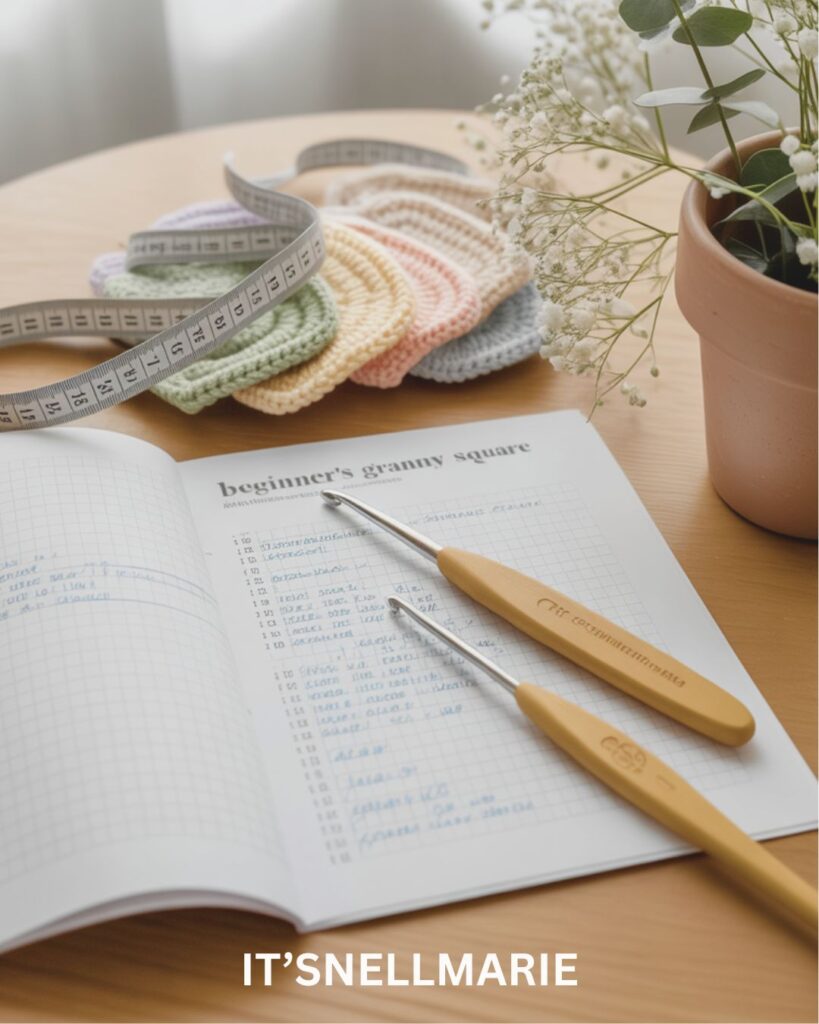
Final Thoughts
Crocheting is such a rewarding hobby—it’s creative, calming, and something you can take with you anywhere. When you’re first starting out, the key is to keep it simple, go slow, and be kind to yourself. Choose patterns that build your confidence, use basic stitches, and give you the space to grow your skills.
Now that you know what kind of patterns to look for and how to set yourself up for success, let’s talk about some actual project ideas you can try. These are all beginner-friendly, use basic stitches, and will give you a solid foundation while making something you’ll actually use (or gift!).
Before you know it, you’ll be making handmade gifts, cozy blankets, and maybe even writing your own patterns. But for now? Start with that first washcloth, scarf, or coaster. The magic is in the beginning.
Pin for later
